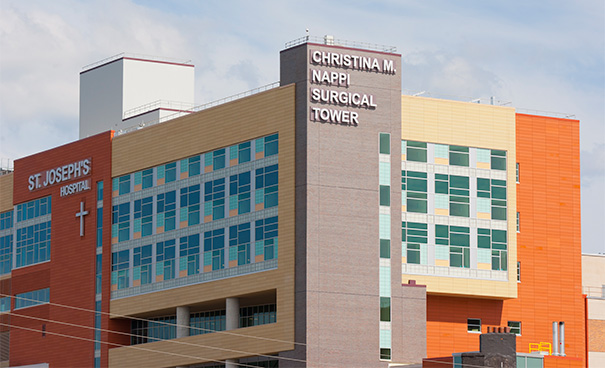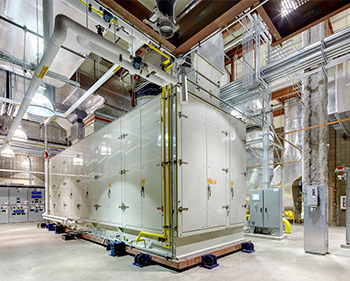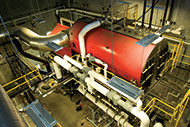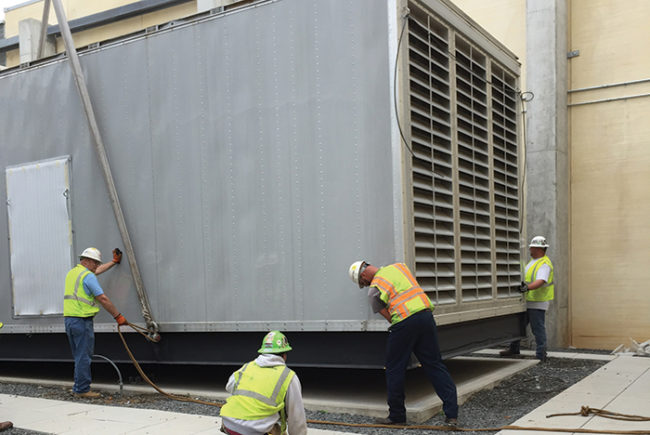 |
|
Photo Courtesy of St. Joseph's Health The new surgical tower is one of the largest sustainalble health care projects in Upstate New York. |
St. Joseph's Hospital Health Center, Syracuse, N.Y., has completed a multiphase 500,000-sq. ft. green construction project that includes a new cogeneration plant that is projected to save the hospital $1 million annually.
The ambitious project has been called one of the largest sustainable health care projects undertaken in Upstate New York. It includes construction of a new surgical tower, an emergency services building and the cogeneration plant, which will produce 90 percent of the electricity required for the hospital's daily operations.
The expansion made sustainability a priority through the use of recycled construction materials, low-flow plumbing, energy-efficient design and more. The actions enabled the hospital to become one of only 28 hospitals in the country to be LEED Gold-certified.
"We have a long-held commitment to stewardship reflected in our deep respect for the environment," says Kathryn Ruscitto, president and CEO, St. Joseph's.
"As an organization, we made the decision to invest in a facilities master plan that would ensure our ability to provide the highest level of patient care now and for years to come," she says.
 |
|
Photo credit: Revette Studios Inc. The cogeneration plant will produce the majority of the tower's electricity as well as the steam it uses for daily operations. |
The $16 million cogeneration plant not only will make the hospital nearly self-sufficient in electricity production, but it also will generate 95 percent of the steam the hospitals uses for hot water, heating, humidification and equipment sterilization.
In addition, the cogeneration plant will eliminate an estimated 12,000 tons of carbon dioxide emissions each year, according to the hospital. The plant utilizes gas turbines that drive a generator to produce electricity.
The $63 million, 104,000-sq. ft. Christina M. Nappi Surgical Tower includes 110 private rooms, new intensive care units and a waiting room with seating for approximately 135.
The tower includes several sustainable and green elements and systems, starting with the installation of tall windows to emphasize natural daylighting where possible.
The building materials and finishes include recycled content, and low-or no-volatile organic compounds in the paint, carpeting and finishes. A chilled beam system utilized in the patient rooms eliminated about 20,000 pounds of ductwork.
A stormwater retention system reduces water runoff by 25 percent. Using the retention system and separating stormwater from sewage reduces the amount of chemicals needed for the water purification process.
The emergency services building houses an expanded emergency department with 54 beds and a 15-bed clinical observation unit with a five-bed chest pain center.
The facility also includes the emergency psychiatric program, which expanded from 6,500 sq. ft. to 17,000 sq. ft., and a new energy-efficient data center that is equipped to provide fast recovery in an outage. A 50,000-sq. ft. green roof reduces stormwater runoff by 25 percent and insulates the building from the sun.
St. Joseph's is a 431-bed comprehensive medical care institution provides general medical and surgical care and several specialty services. St. Joseph's Health is a nonprofit regional health care system based in Syracuse, N.Y., and serves patients throughout central New York and northern Pennsylvania.





